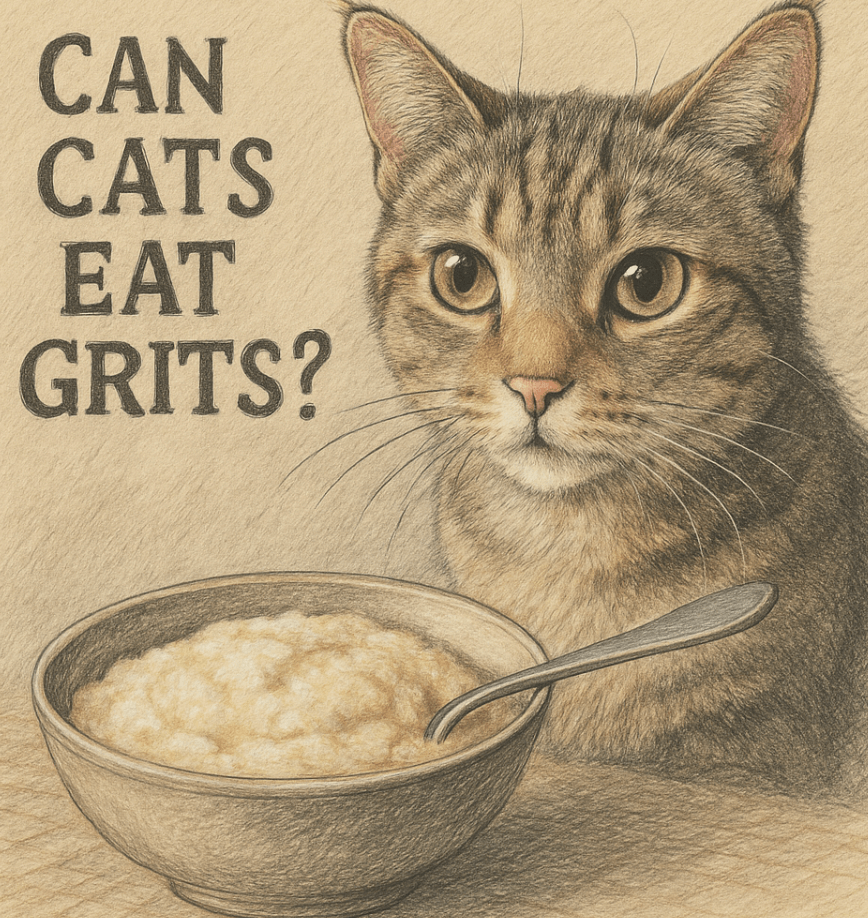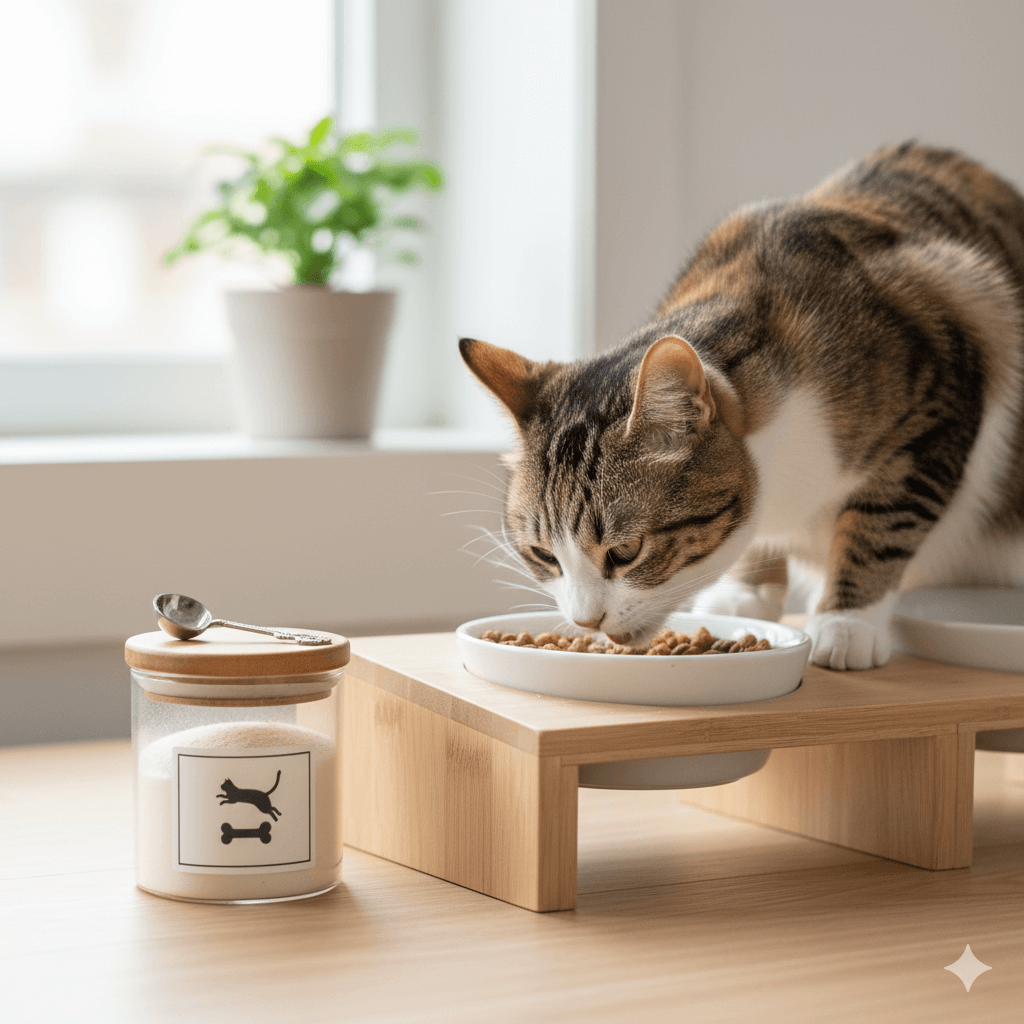Can Cats Eat Grits? What You Need to Know
Cats are curious creatures, and it’s not uncommon for them to show interest in what we’re eating. If you’ve ever wondered whether your feline friend can safely enjoy a bite of grits, you’re not alone. Grits, a popular Southern dish made from ground corn, are a staple in many households—but are they safe for cats? While grits themselves aren’t toxic, there are important considerations to keep in mind before sharing this food with your pet. In this blog post, we’ll explore the potential risks and benefits, safer alternatives, and expert tips to ensure your cat stays healthy and happy.
Potential Risks of Feeding Grits to Cats
While grits may seem harmless, they can pose certain risks to cats if not handled carefully. Understanding these dangers is essential to protect your pet’s health.
High Carbohydrate Content:
Grits are primarily made of corn, which is high in carbohydrates—a nutrient that cats don’t need in large amounts as obligate carnivores.Digestive Upset:
Cats have sensitive digestive systems, and unfamiliar foods like grits can cause vomiting, diarrhea, or bloating.Risk of Choking:
Dry or improperly prepared grits can be difficult for cats to chew and swallow, increasing the risk of choking.Added Ingredients:
Butter, cheese, salt, or spices often added to grits can be harmful to cats, especially in large quantities.Nutritional Imbalance:
Feeding grits regularly could lead to an imbalanced diet, depriving your cat of essential nutrients they need from meat-based foods.
These risks highlight why caution is necessary when considering giving grits to your cat. Always prioritize their dietary needs over curiosity.
Benefits of Grits for Cats (When Prepared Safely)
In rare cases, grits may offer minor benefits if served plain and in moderation. Here’s what you need to know about the potential upsides.
Source of Energy:
The carbohydrates in grits can provide a quick energy boost, though this isn’t typically necessary for cats.Easy to Digest (Plain Version):
Plain, cooked grits without additives are less likely to upset your cat’s stomach compared to heavily seasoned foods.Hydration Support:
Adding a small amount of water or broth to grits can help increase your cat’s fluid intake, which is beneficial for hydration.Occasional Treat Option:
A tiny portion of plain grits can serve as an occasional treat, satisfying your cat’s curiosity without major harm.Customizable for Sensitivities:
For cats with specific dietary restrictions, plain grits can be tailored to avoid triggering allergies or intolerances.
While these benefits exist, they must be weighed against the potential drawbacks to determine if grits are truly suitable for your cat.
Check this guide 👉Can Cats Eat Corn Husks? Best 7 Expert Tips!
Check this guide 👉Can Cats Eat Lime? Best 7 Expert Tips!
Check this guide 👉Can Cats Eat Maple Syrup? Best 7 Expert Tips!

Safe Alternatives to Grits | Risks of Unsafe Food Choices |
|---|---|
Cooked chicken (unseasoned) | Spicy or salty foods causing illness |
Plain rice (small portions) | Foods with dairy leading to lactose intolerance |
Steamed vegetables (e.g., carrots) | Processed foods with artificial additives |
Bone broth (unsalted) | Raw grains posing choking hazards |
Cat-safe treats from pet stores | Toxic ingredients like garlic or onions |
How to Safely Introduce Grits to Your Cat
If you decide to let your cat try grits, it’s crucial to take precautions to minimize risks. Follow these guidelines to ensure a safe experience.
Serve Plain Only:
Avoid adding butter, cheese, salt, or spices, as these can irritate your cat’s digestive system.Cook Thoroughly:
Raw or undercooked grits are harder to digest and more likely to cause choking or blockages.Offer Tiny Portions:
Start with a very small amount to see how your cat reacts before offering more.Monitor for Reactions:
Watch for signs of digestive upset, such as vomiting, diarrhea, or lethargy, after feeding grits.Consult Your Veterinarian:
Before introducing grits or any human food, seek advice from your vet to ensure it aligns with your cat’s dietary needs.
By following these steps, you can mitigate risks while allowing your cat to explore new flavors responsibly.
Signs Your Cat May Be Struggling with Grits Consumption
Even with precautions, complications can arise if your cat consumes grits improperly. Watch for these warning signs to act quickly if something goes wrong.
Vomiting or Diarrhea:
These symptoms may indicate that your cat has ingested something their stomach cannot tolerate.Lethargy or Weakness:
A sudden lack of energy could signal nutritional imbalance or dehydration caused by improper food.Loss of Appetite:
If your cat refuses to eat after trying grits, it may indicate digestive discomfort or illness.Excessive Drooling:
Drooling could suggest irritation or nausea caused by consuming gritty textures or additives.Constipation or Blockage:
Swallowed dry grits can swell in the digestive tract, causing blockages that require veterinary attention.
Recognizing these signs early allows you to seek veterinary care promptly, preventing further complications.
Common Mistakes to Avoid When Feeding Grits to Cats
Feeding grits to your cat requires careful consideration to avoid mistakes that could endanger their health. Here are some pitfalls to watch out for.
Adding Seasonings or Dairy:
Ingredients like butter, cheese, or salt can upset your cat’s stomach and cause long-term health issues.Serving Large Portions:
Even plain grits can overwhelm your cat’s digestive system if given in large amounts. Stick to tiny bites.Ignoring Allergies or Sensitivities:
Some cats may have grain sensitivities; observe their reaction before offering grits again.Feeding Frequently:
Regularly feeding grits can disrupt your cat’s balanced diet, leading to malnutrition or obesity.Neglecting Veterinary Advice:
Skipping a professional opinion can result in unknowingly harming your cat with inappropriate food choices.
Avoiding these mistakes ensures a safer and healthier experience for your cat.
Alternatives That Mimic the Texture of Grits
If you’re hesitant about feeding grits, there are plenty of alternatives that mimic their texture without the associated risks.
Plain Rice:
Cooked white or brown rice is easy to digest and provides a similar soft texture.Mashed Pumpkin:
Rich in fiber, mashed pumpkin supports digestion and offers a smooth consistency cats often enjoy.Oatmeal (Plain):
Cooked oatmeal is another bland, grain-based option that’s gentle on your cat’s stomach.Steamed Sweet Potatoes:
Soft and nutrient-rich, sweet potatoes are a safe alternative for cats who tolerate vegetables.Cat-Specific Wet Food:
Many wet cat foods have a porridge-like texture that satisfies curiosity without compromising nutrition.
These alternatives allow you to cater to your cat’s instincts while keeping them safe.
Understanding Your Cat’s Natural Instincts Around Human Food
Cats are naturally curious about human food, but their instincts don’t always align with safety. Understanding their behavior helps explain their fascination.
Hunting Behavior:
Cats are drawn to smells and textures reminiscent of prey, making soft, mushy foods like grits intriguing.Exploration Through Taste:
Cats use their mouths to explore new textures, and grits provide an interesting sensory experience.Craving Variety:
Despite being obligate carnivores, cats sometimes crave variety in their diet, leading them to investigate human meals.Association with Comfort:
Warm, soft foods like grits might remind cats of nursing or comfort, triggering interest.Territorial Marking:
Chewing or pawing at objects like plates of grits can serve as a way for cats to assert ownership or relieve stress.
By recognizing these behaviors, you can better address your cat’s needs in a safe and controlled manner.
Frequently Asked Questions About Cats and Grits
Are grits toxic to cats?
No, plain grits are not toxic, but they can still cause digestive issues or nutritional imbalances if fed improperly.
Can kittens eat grits?
Kittens should avoid grits entirely due to their developing digestive systems, which are more sensitive than adult cats’.
What type of grits is safest for cats?
Plain, cooked grits without any seasoning or additives are the only safe option—and even then, in very small amounts.
How often can I give my cat grits?
Grits should only be given as an occasional treat, if at all, and never as a regular part of their diet.
What should I do if my cat eats seasoned grits?
Monitor your cat closely for adverse reactions and contact your veterinarian if symptoms like vomiting or diarrhea occur.
Prioritizing Your Cat’s Health When It Comes to Grits
Feeding grits to your cat can be a safe occasional indulgence if done carefully, but it’s not a necessity or recommended staple in their diet. While grits may seem harmless, their high carbohydrate content and potential for digestive upset make them less than ideal for feline consumption. By understanding the risks, choosing safer alternatives, and consulting your veterinarian, you can ensure your cat stays healthy and happy. Remember, your furry friend relies on you to make the best dietary choices for them—so always prioritize their well-being above all else.
Understanding Bone Supplement for Cats: Best 7 Expert Tips! – Safe, vet-approved guidance for strong feline bones & balanced nutrition.
Bone Supplement for Dogs: Best 7 Expert Tips! – Expert guide to calcium, collagen & bone health for every life stage.
Understanding Can Cats Get Sunburn: Best 7 Expert Tips! – Protect your feline from UV damage with vet-backed prevention strategies.
How to Train a Seizure Alert Dog: Best 7 Expert Tips! – Learn expert-backed steps to nurture natural instincts into reliable, life-saving seizure alerts.




